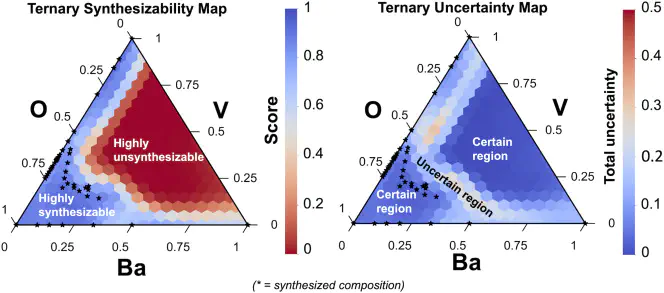
Abstract
Synthesis of new inorganic phases relies on expert intuitions, laborious syntheses, and serendipity. Here, we propose a data-driven model based on positive-unlabeled learning to guide synthesis experiments by predicting, for any given elemental stoichiometries, the likelihood of synthesizing inorganic materials. Our synthesizability prediction model shows a true positive rate of 83.4% for the test dataset and an estimated precision of 83.6%. The ability of our model to treat arbitrary elemental combinations allows one to construct the continuous synthesizability phase map in good agreement with the available synthetic data. Furthermore, we use our model to guide experimental exploration of the quaternary oxide compositional space comprising CuO, Fe2O3, and V2O5, resulting in the discovery of a new phase, Cu4FeV3O13. We expect that our approach could aid the synthesis of new inorganic compositions by suggesting synthetically more accessible stoichiometries.